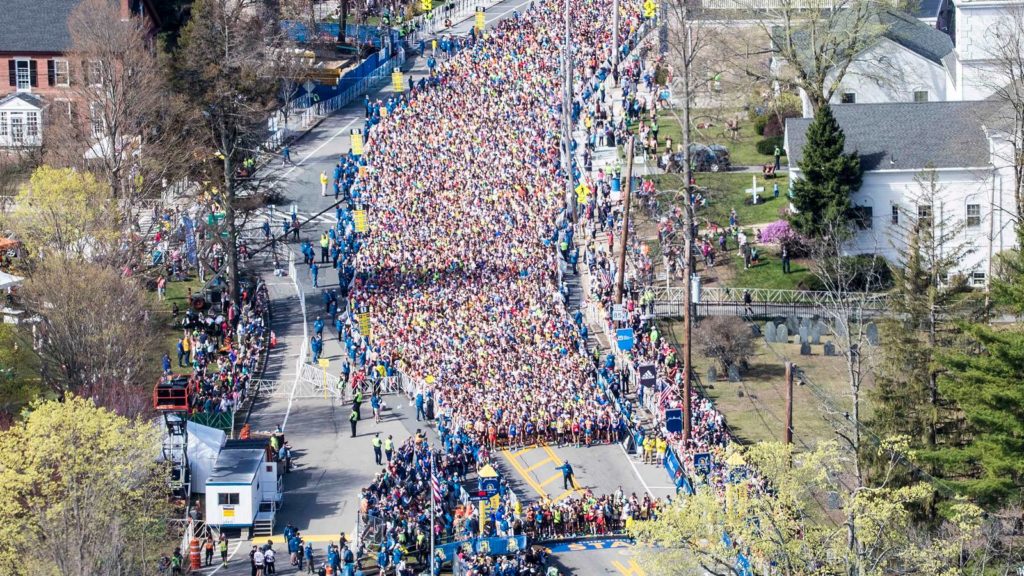The 2020 Boston Marathon: A Little Bit Faster Now
|
I’ve heard and seen quite a few grumbles about qualifying standards for the 2020 Boston Marathon getting 5 minutes faster across the board (after the cutoff for entry into next year’s race was revealed to be 4 minutes and 52 seconds faster than the current qualifying standards) and I’m not sure I completely understand the complaints. The reality is that the Boston Marathon simply cannot allow everyone who hits a qualifying mark into the race. There’s a few good reasons for this, which I’ll try to outline here:
1. Logistically, the course cannot safely accommodate much more than 30,000 runners. The 100th running in 1996 had over 38,000 participants (and there wasn’t even a wave start back then, which had to have been a clusterf*ck in Hopkinton!) and there were over 35,000 in 2014 (over 5,000 runners who were stopped early by the finish line bombings in 2013 were invited back), but over the past four years the field size has settled in at about 30,000 runners. Here are participation numbers through the years, if you’re interested in checking those out.
2. Given that, it’s important to note that about 20 percent of the field each year is made up of charity runners, race sponsors, local police and fire personnel, and members of local running clubs who annually volunteer at aid stations along the course. None of these bibs require achieving a qualifying time—they do require paying all applicable race fees, however—and before another person writes me complaining about any of this, please realize that Boston Marathon charity runners, each of whom are required to raise at least $5000, contributed over 36 million dollars to over 100 charities at this year’s race. Also, the race, which runs through eight cities and towns and takes many millions of dollars to put on, doesn’t happen without sponsors, local police and fire departments, or volunteers. I think setting aside 20 percent of entries for these runners is completely reasonable.
3. The remaining 80 percent of field is made up of time qualifiers—the fastest qualifiers get to register first, and then the next fastest, and so on over the course of a week, until capacity is reached. Given the limitations on the field size and the ever-increasing popularity of the race (which I don’t see slowing down anytime soon), this means that more and more runners who hit the qualifying time will get turned away every year. The democratic solution in this situation? Raise the bar and make it harder to qualify.
Boston isn’t supposed to be an easy race to get into—its exclusivity has long been a part of its history, as well as its appeal. With some aforementioned exceptions, you have to earn your spot, which is what makes the pursuit meaningful in the first place. Complaining isn’t going to get anyone anywhere. So whether you’ve qualified multiple times, missed the mark by mere seconds, or aren’t even close to being in the ballpark: aim higher, work harder, and elevate everyone around you. That’s as much a lesson for life as it is qualifying for the Boston Marathon.